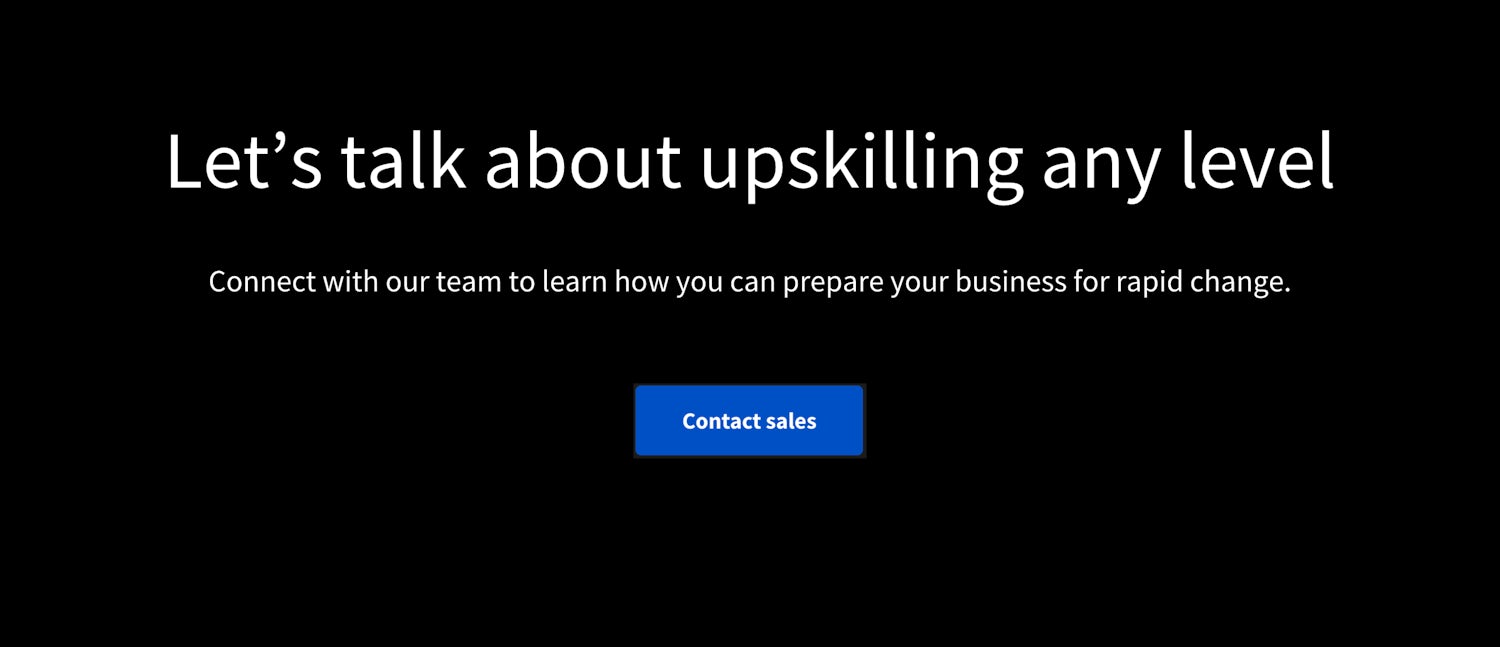9 Ways to Boost Employee Skills at Your Company
Learn about the importance of upskilling and discover ways to boost employee skills at your company.
![[Featured image] Woman getting assistance while working on a tutorial lesson on a laptop](https://d3njjcbhbojbot.cloudfront.net/api/utilities/v1/imageproxy/https://images.ctfassets.net/wp1lcwdav1p1/1VuTSXJ3rY397FM6XxGqd8/e79372bff3d671ab6425657801ad426e/iStock-538754427_super.jpg?w=1500&h=680&q=60&fit=fill&f=faces&fm=jpg&fl=progressive&auto=format%2Ccompress&dpr=1&w=1000)
If you wonder why some companies seem more successful than others, the answer might lie in upskilling. For business owners, the term upskilling refers to the process of providing employee education and training in the hopes of developing a more skilled workforce. Read this guide to learn more about building employee skills at your company and how you can benefit.

The importance of upskilling
Learning new skills matters to American workers. According to a recent study from Gallup commissioned by Amazon, nearly half of the participants said they would change jobs if a new employer provided skills training [1].
Employees and employers both benefit from upskilling. It can raise morale, boost employability, and offer employees a greater sense of value. For companies, upskilling can result in higher productivity, increased worker retention rates, and savings on new employee recruitment.
Read more: The Importance of Skill Development and Where to Start
Ways to boost employee skills
As shown, investing in workers provides many benefits to companies. To boost employee skills at your company, consider incorporating a few or all of these strategies:
1. Create a sufficient learning and development budget.
Although training costs money, you'll save on hiring new employees by investing in the ones you have. To determine your budget, consider which employees need training, what type of training they need, and what you can afford.
When designing your budget, use a spreadsheet to keep track of all training costs. And make sure to factor in what it costs your company to have employees in training instead of working.
2. Provide options for e-learning.
E-learning has become more popular than ever due to distancing policies established at the onset of the pandemic. To save money on employee skills training, consider purchasing memberships to e-learning platforms for the whole company.
Read more: 5 E-Learning Trends That Benefit the Workplace
3. Keep up to date on digital literacy.
Remember that e-learning demands digital literacy. In addition to personal computers, you may require your employees to use smartphones, tablets, and specific computer applications and software. Conduct technology training for your employees as needed to avoid skills gaps and maintain productivity.
4. Make use of job shadowing and mentoring.
Job shadowing often proves successful when training a new employee or introducing new skills to existing staff. Instead of telling an employee how to perform a skill, it can help demonstrate the skill and then have the employee practice it.
Mentoring can be helpful for long-term career development. Consider matching entry-level employees with seasoned professionals to provide important information, career advice, and moral support.
5. Involve employees in peer-to-peer learning.
While peer-to-peer learning can involve job shadowing, it can also take on a more significant role at your company. Companies should encourage employees at the same job level or department to get together and share information.
Peer-to-peer learning can enhance all types of job skills, improving communication skills at your company. Avenues for peer-to-peer learning include:
Team projects
Work committees
Company book clubs or study groups
Professional workshops, conferences, and networking events

6. Add lunch-and-learn sessions to your employee training regimen.
Lunch-and-learn sessions permit employees with extensive knowledge of a subject to share it with other employees in a relaxed and comfortable setting. It also allows all employees who work through lunch to leave an hour earlier at the end of the day.
Good places to hold lunch-and-learn sessions include your employee break room, a company conference room, a restaurant meeting room, or a nearby park. Common themes for lunch-and-learn sessions include:
Career development
Personal development
Communication
Conflict management
Problem-solving
Diversity
Leadership
Health and wellness
For an alternative to lunch-and-learn sessions with a live presenter, consider showing pertinent videos or playing work-related podcasts.
7. Boost employee skills with microlearning.
Microlearning involves budget-friendly training designed for quick delivery and consumption, usually within five minutes. Microlearning materials often contain only one subject, and they can offer better retention than many learning materials.
Typically delivered digitally, microlearning can include:
Infographics
Games
Modules
Quizzes
Videos
8. Provide employees with opportunities for stretch assignments.
A stretch assignment challenges employees to learn and grow (or stretch their skill level) to complete it. Employees benefit from stretch assignments by gaining more knowledge, work skills, responsibilities, and resiliency. Employers benefit from stretch assignments by building employee trust and developing employees to take over for coworkers when they advance in the company or leave.
Examples of stretch assignments can include:
Mentoring a new employee or team member
Supervising an intern or volunteer
Heading up a new project
Making a presentation
Leading a staff meeting
Organizing a company event
9. Offer employees training enrollment and tuition incentives.
Employees appreciate companies that cover training costs, so consider offering payment incentives for work-related courses, certifications, and other types of training. Some employers even offer tuition incentives for acquiring a degree. These incentives help ensure a more knowledgeable and skilled workforce and provide various other benefits to employers.
These include:
More job candidates are attracted to open positions
Higher employee retention
Greater employee engagement
Federal tax breaks
Next steps: Getting started on Coursera
To improve employee skills in your company, consider taking Learning and Development offered by HRCI on Coursera. By investing just two hours each day, you should be able to complete this course in about one week.
As you progress through Learning and Development, you'll learn how to identify your training needs and create plans and strategies for employee education and training. You'll explore varied training types, delivery techniques, and learning models to help you understand how to serve your employees best. You'll also have the opportunity to learn how to use feedback and metrics to determine the success of your learning and development program.
Learning and Development is one of five courses comprising the Human Resource Associate Professional Certificate offered by HRCI, so you may want to explore the whole series. Looking to upskill your team? Consider Coursera for Business.

Article sources
Gallup. "American Upskilling Study: Empowering Workers for the Jobs of Tomorrow, https://www.gallup.com/analytics/354374/the-american-upskilling-study.aspx." Accessed November 21, 2023.
Coursera Staff
Editorial Team
Coursera’s editorial team is comprised of highly experienced professional editors, writers, and fact...
This content has been made available for informational purposes only. Learners are advised to conduct additional research to ensure that courses and other credentials pursued meet their personal, professional, and financial goals.